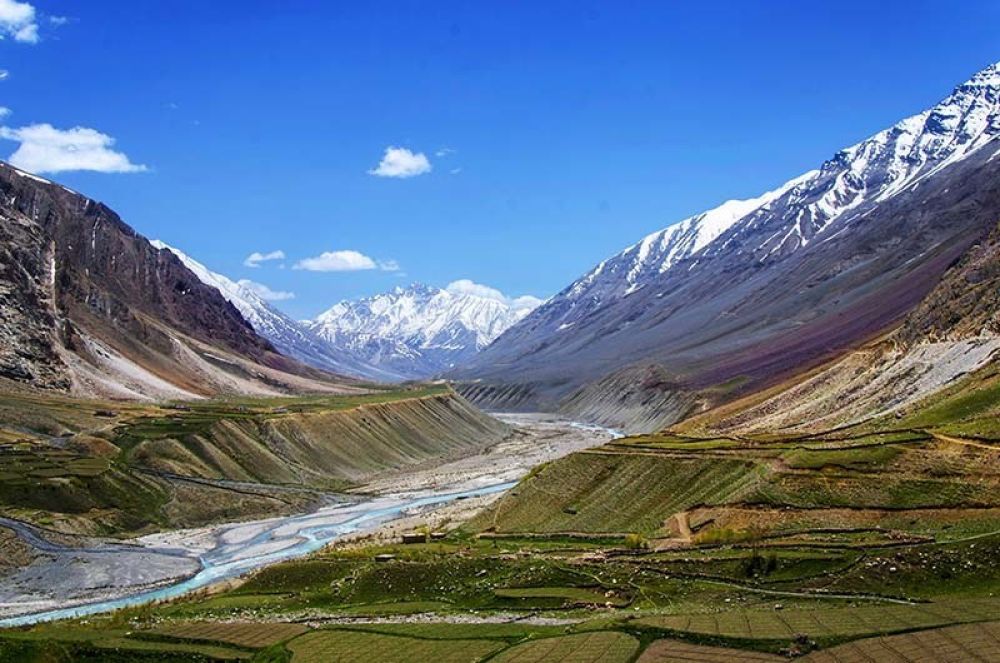

The serene and majestic Pin Valley National Park, located amidst the cold desert region of Lahaul Valley in Himachal Pradesh, India, is a stunning testament to the natural beauty and biodiversity of the Western Himalayas. Here is a brief look into the history and tourism attraction of this captivating destination.
Established in January 1987, Pin Valley National Park covers an area of approximately 675 square kilometers. It was created to protect the unique flora and fauna of the region, particularly the endangered Snow Leopard and Siberian Ibex. The history of tourism in this area, however, stretches back far before the park was established, with mountaineers and explorers visiting the region due to its challenging terrain and pristine landscapes.
Initially, the remote location and lack of infrastructure limited tourism to the most adventurous travellers. Over the years, as awareness of the park's conservation efforts and its natural beauty grew, more facilities were developed to accommodate tourists seeking the tranquil beauty of the Himalayas. Despite this, the region has remained one of the less frequented destinations, thereby retaining much of its untouched charm.
The park is renowned for its stunning landscapes, which include sprawling areas of barren land, interspersed with patches of greenery and meandering rivers. Visitors come to the park primarily to witness its rich wildlife. Among the most sought-after sights are the elusive Snow Leopard, the Tibetan Wolf, the Red Fox, Pika and several species of birds.
The valley is also home to a number of Buddhist monasteries, showcasing the spiritual and cultural life of the local Tibetan communities. These include the Kungri Monastery in Pin Valley, which is a significant attraction for those interested in the culture and history of the region.
In recent years, there has been a significant emphasis on eco-tourism, with the local government and various NGOs working together to promote sustainable travel. Treks and expeditions are carefully managed to minimize environmental impact, and visitors are educated on the importance of preserving the park's delicate ecosystems.
Tourism trends indicate a rise in demand for homestays and experiential travel, allowing tourists to immerse themselves in the local culture while supporting the economies of nearby villages. The development of the Buddhist Circuit, integrating various monasteries and religious sites, is also gaining popularity among tourists interested in the spiritual heritage of the area.
Adventure tourism has also seen a rise with more trekking trails and adventure sports being offered. One of the most famous treks includes the Pin Parvati Pass trek, which attracts a considerable number of hiking enthusiasts every year.
Promoting Responsible Tourism: As tourism increases, the focus remains on education and the promotion of responsible tourism practices to ensure that the pristine beauty of the Pin Valley National Park remains unspoiled for generations to come.
We invite you to experience the awe-inspiring beauty and cultural richness of Pin Valley National Park, which continues to be one of the hidden gems of India’s vast and varied landscape.